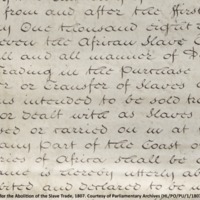
Voices from Africa
To commemorate the bicentenary, St Mungo Museum of Religious Art and Life (with support from the Scottish Museum Council) explored the social and economic legacies of slavery, including racism and cultural stereotyping. The museum worked with members of Glasgow's African and African Caribbean communities on reinterpreting objects from across Glasgow Museums. As part of the project, artist Beth Forde was commissioned to create an artwork to explore some of the issues raised, titled 'The shadow of the object fell upon the ego'. Voices from Africa was part of a year-long programme of lectures, schools events and exhibitions highlighting the life of African communities in Glasgow. This included a photographic project with photographer Roddy Mackay to represent African heritage in Scotland, and a series of free workshops exploring aspects of faith and belief.
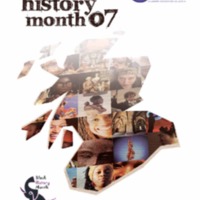
Black History Month 07
Glasgow Anti Racist Alliance (GARA) organised a programme of events for Black History Month in October 2007 with a particular focus on the bicentenary and engaging people in the importance of Black history. GARA were supported by Glasgow City Council Education Services and Culture and Sport Glasgow. Events included talks at the Hunterian Museum, interactive exhibits at the Glasgow Science Centre and film showings, capoeira and African drumming workshops at the Glasgow Film Theatre. Sugar & Spice Sunday on 14 October marked the bicentenary with a festival of commemoration and celebration through films and events. GARA also hosted Black History Tours around Glasgow to explore the city's hidden slavery history.
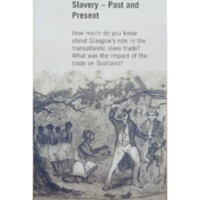
Towards Understanding Slavery: Past and Present
The Towards Understanding Slavery: Past and Present initiative by Glasgow City Council aimed to increase understanding of the human effects of the transatlantic slave trade, and explore its impact on Scotland's national heritage and Glasgow's history. A series of events, exhibitions and education programmes ran across the city throughout 2007. These included an exhibition of William Blake's works relating to the idea of slavery at the Burrell Collection, and a photographic exhibition by Graham Fagen, 'Downpresserer', at the Gallery of Modern Art, examining the cultural heritages of Scotland and Jamaica. There was a series of performances and talks at Kelvingrove Art Gallery and Museum, and events at the People's Palace and Winter Gardens focused on links between Glasgow's tobacco trade and slavery through the family portrait of the 'tobacco lord' John Glassford (there is said to be a figure of a young black man behind Glassford's chair that has been deliberately obscured or painted over). A year-long programme of lectures, schools events and exhibition highlighting the life of African communities in Glasgow took place at St Mungo Museum of Religious Life and Art.
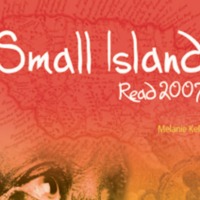
Small Island Read 2007
This community-based mass reading scheme drew together partners from four areas of the UK; Bristol and the South West (Great Reading Adventure), Liverpool and the North West (Liverpool Reads), Hull (Hull Libraries) and Glasgow (Aye Write! Bank of Scotland Book Festival). 50,000 free copies of Andrea Levy’s award-winning novel 'Small Island' were distributed - a story of Jamaican slave descendants arriving in the UK in the 1940s, it addressed resonant themes of identity, racial awareness, forgiveness, ignorance and survival. There was also an accompanying reader's guide. Younger audiences took part by reading Benjamin Zephaniah’s 'Refugee Boy', or Mary Hoffman’s 'Amazing Grace'. Activity packs inspired discussion of historic and contemporary issues addressed in the texts. Featured are some of the responses of pupils from Parson Street Primary School, Bristol, to 'Refugee Boy'.
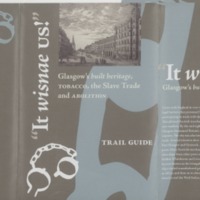
“It wisnae us!” Glasgow’s built heritage, tobacco, the slave trade and abolition
By the mid-18th century, Glasgow dominated Britain's tobacco and sugar imports, and the city was also involved in the slave trade. In 2007 Glasgow Built Preservation Trust (GBPT), in partnership with Glasgow Anti Racist Alliance, developed an exhibition linking Glasgow’s built heritage with the slave trade. In September 2007, Glasgow’s Doors Open Day event marked the bicentenary with walks (both guided and by podcast), a pop-up exhibition, and an evening of drama, talks and music. The event was later transformed into a week long ‘built heritage festival’, from which a travelling exhibition and city trail were created by the historian Stephen Mullen.